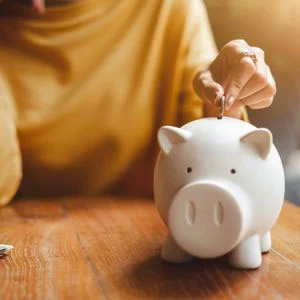Tips to Create an Emergency Savings
If you’re short on savings, you’re not alone. About 76% of Americans live paycheck-to-paycheck. In fact, 27% have no savings at all, let alone money for emergencies.1
Here are some ideas on how to create an emergency savings.
Saving Up vs. Saving for Emergencies
Many people think about saving money for a vacation, home, car, wedding, retirement, or something pleasant in the future. For this, you might consider a savings strategy using Term Certificates, IRAs and other savings and investment vehicles.
An emergency savings tends to require a different type of account, because the money needs to be liquid. In other words, when you need it, you want to be able to access it easily without penalties.
For this type of account, consider a Money Market or Share Savings Account. The point is to look beyond your regular checking account. (It’s too easy for money to “evaporate” from there.)
How to Save More Easily
Creating an emergency savings might be easier than you think. The main trick is to be:
- Consistent. Saving once and a while won’t cut it. Make it a monthly, if not weekly, routine.
- Realistic. Don’t try to save your entire paycheck. Smaller amounts can add up quickly.
- Committed. Don’t dip into your emergency savings without a decent reason (are concert tickets a true emergency? Hmmm...)
Consider trying to “find” money for your emergency savings in the following places.
Coin jars. Bring us your forgotten, dusty coin jars. We’ll sort them with our free Coinstar service. (This saves you the 9% transaction fee.)
Unclaimed property. When money due to you ─ such as a refund, class action settlement or a closed bank account ─ fails to find you, it gets turned over to the state. This usually happens when people move. Each state keeps the money in the hopes the owner will claim it. Is there money out there waiting for you? Check out the National Association of Unclaimed Property Administrators at www.unclaimed.org.
Set up auto deposit. Talk to us about automatically deducting a small amount from your checking account and putting it into your savings. Chances are, you won’t miss the nominal amount, and it will add up quickly and quietly.
Review your monthly statements. It’s always a good idea to watch your debit and credit card transactions for suspicious activity, but it’s also a great way to see the reality of what you spend where ─ and how often. We’re not here to latte shame anyone, but sometimes a reality check on these kinds of purchases will jolt your system more than a double espresso. If you can shave off just a few splurge spends each month, you’ll have more to save. Just make sure you “pay yourself” by putting the money into your savings account.
Pay yourself for our free ATMs. Each time you pull money from one of our ATMs or our co-op network of about 30,000 fee-free ATMs, you don’t pay a transaction fee. With out-of-network ATM fees averaging about $3.00, you might be saving quite a bit each month. Why not put this amount in your account?
Your emergency savings is a safety net for unforeseen situations, such as job loss, a medical emergency, or an auto or home repair. The more you have, the more peace of mind you will achieve. But the buffer doesn’t need to be huge. Start with what you can, and build from there. $10 a week doesn’t sound like much, but it’s $520 after a year, which is a nice base.
So make it easy. Make it routine. And make it a part of your financial mentality.
- “76% of Americans are living paycheck-to-paycheck,” CNN Money, http://money.cnn.com/2013/06/24/pf/emergency-savings/index.html






